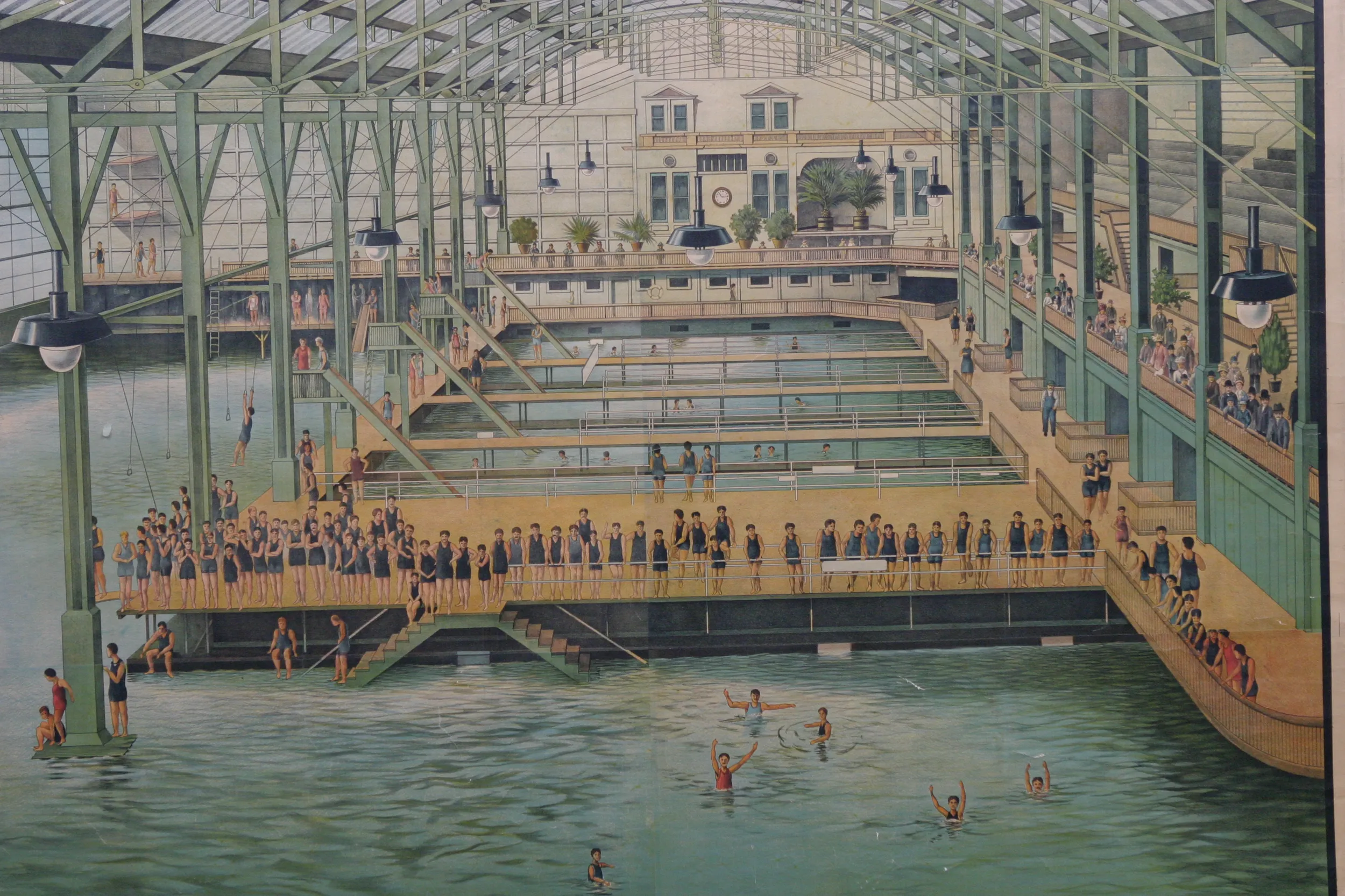GUEST: I know that it's the Sutro Baths in San Francisco, which I believe burned down or fell apart during the 1906 earthquake. I assume it's a lithograph. The piece was left to us by a friend that passed away a few years ago. When we got it, we rolled it up, because our ceilings weren't high enough to hang it properly. Then we just unrolled it two years ago. We bought a new home, higher ceilings, and have been staring at it ever since in our living room and loving it.
APPRAISER: It is the Sutro Baths in California. They actually burned down in the 1960s.
GUEST: Oh, '60s.
APPRAISER: But they were really in work through... basically through the First World War was the height of their popularity. And this was an aqua park extravaganza, like Water World today. They had a total of seven baths, which could hold 1.7 million gallons of water, and it was all saltwater. It was filled at high tide. It took about an hour for the tides to fill the pools. They had slides. They had trapezes. They had high diving boards. They had three restaurants. They had a theater for shows. They had room for 10,000 swimmers on any day. They had 20,000 bathing suits for rent, and they had 40,000 towels for rent. So you can imagine a complex of this size is going to call for a very big poster. The poster actually dates from 1896. It is a lithograph, and it's interesting because they didn't have printing presses that could accommodate such a large sheet of paper. So this is actually printed on 12 different sheets.
GUEST: Yeah, I noticed the seams and...
APPRAISER: Down at the bottom, they actually numbered the different sheets so that when the boards were being hung, people knew... as if they couldn't figure it out themselves from the picture, they knew which order to hang the sheets. And as you can see, the sheets didn't always match up. So as you see here in the middle, you can see the seam, and, oh, this guy lost an arm in the match-up. But otherwise it's fairly seamless. You can see slight variations in color, and there's different seams all over the place where they put the entire image together.
GUEST: That missing arm has always bothered me.
APPRAISER: It's part of the inherent nature of the piece. If you look over here, you'll see there's a guy who's lost his head. It doesn't in any way detract from the value, but it tells you something about how the piece was printed. The Sutro Baths are an incredible institution. The ruins are still there today. I think they're run by the National Parks Commission. This is really an iconic American poster. Now, the condition isn't great. There are some problems with the condition. You'll see there are some tears. There's some paper losses, and, you know, that could be fairly easily fixed. A good restorer will actually paint those out, and as there's no missing paper, that really won't affect the value at all. There are really only a few known copies of this in existence. Last year we sold one in similar condition for $13,000.
GUEST: Wow.
APPRAISER: So I would say an auction estimate of $15,000 to $20,000 would not at all be out of range.
GUEST: Oh, wow, that's great. Thank you.
APPRAISER: That's a big pool of money to dive into.
GUEST: Yeah.



